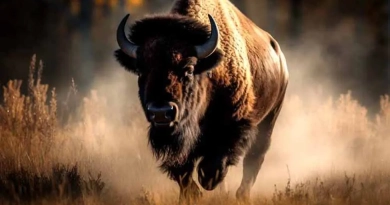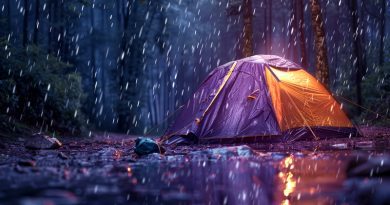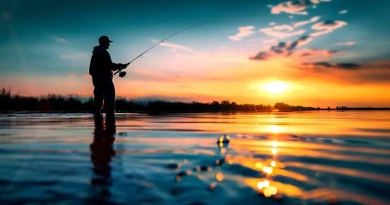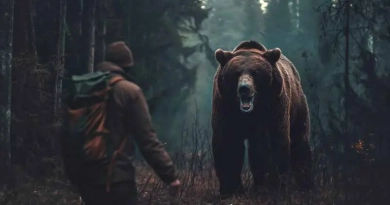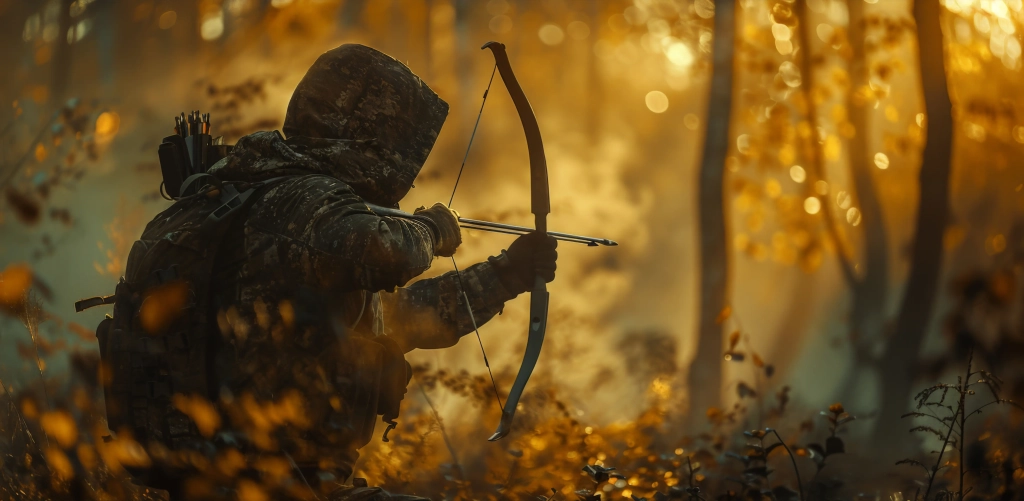
What Are The Best Practices For Bow Hunting?
An ancient dance between hunter and prey
The forest was alive with the first light of dawn, a quiet, ethereal mist rising from the ground as I made my way deeper into the wilderness. Each step was deliberate, and each breath measured. Bow in hand, quiver on my back, I pondered the question that had been my constant companion: “What are the best practices for bow hunting?” This isn’t merely a sport; it’s an ancient dance between hunter and prey, where every movement and every decision must be executed with precision and respect.
Mastering the Craft of Bow Hunting
Bow hunting is a craft that requires a blend of physical skill, mental focus, and deep knowledge of the natural world. It’s about more than just hitting a target; it’s about becoming one with the environment, understanding the behavior of the prey, and making ethical choices. The pursuit demands a level of dedication and respect that transcends mere sport.
The Fundamentals of Bow Hunting
Accuracy and Precision:
Bow hunting demands a high level of accuracy. Unlike rifle hunting, where shots can be taken from several hundred yards away, bow hunting often requires getting within 20–30 yards of your target. This proximity calls for impeccable marksmanship. The margin for error is slim, and the goal is to ensure a quick, humane kill. This precision comes from countless hours of practice, understanding your bow’s mechanics, and honing your skills to hit a small target under pressure.
Stealth and Patience:
Success in bow hunting often hinges on the ability to move silently and wait patiently for the perfect shot opportunity. The forest is a quiet place, and the slightest noise can alert deer to your presence. This requires not only physical stealth but also the mental patience to wait for the right moment. The ability to remain motionless for extended periods, control your breathing, and stay focused is crucial.
Ethical Hunting:
Ensuring a quick, humane kill is paramount. This means knowing your equipment, your own capabilities, and the anatomy of the animal. Ethical hunting practices respect the animal and the environment. This includes taking responsible shots, tracking wounded game diligently, and following all legal and ethical guidelines.
Overcoming Obstacles in Bow Hunting
The journey to mastering bow hunting involves navigating a series of challenges and refining your skills through practice and experience.
1. Equipment Choice and Setup
Choosing the Right Bow:
Options include compound bows, recurve bows, and longbows. Each has its own advantages and disadvantages. Compound bows are popular for their accuracy and power, featuring a system of pulleys and cables that make drawing and holding easier. Recurve bows offer simplicity and a traditional feel, while longbows provide a classic hunting experience with a longer learning curve. The best choice often depends on personal preference and hunting style.
Setting Up Your Bow:
Proper setup is crucial for accuracy. This includes adjusting the draw weight and length to fit your physical capabilities and hunting needs. Ensuring the bow is tuned—meaning that the arrows fly straight and true—is essential. Selecting the right arrows and broadheads is equally important. Arrows must be matched to the bow’s draw weight and length, while broadheads should be sharp and designed for the game you are hunting.
2. Physical and Mental Preparation
Physical Fitness:
Bow hunting can be physically demanding. Regular exercise, focusing on strength, endurance, and flexibility, will help you handle long hikes, climbs, and holding a drawn bow for extended periods. Strength training for the upper body, core, and legs is beneficial, along with cardiovascular workouts to enhance stamina. Flexibility exercises, such as yoga, can improve your ability to draw and hold your bow steadily.
Mental Focus:
Bow hunting requires a calm, focused mind. Practicing mindfulness and stress-relief techniques can improve your ability to remain composed and make precise shots under pressure. Meditation, deep breathing exercises, and visualization can help you maintain mental clarity and focus during the hunt.
Implementing Best Practices
With years of experience in the field, I’ve developed a set of best practices that enhance success and safety in bow hunting.
1. Practice Regularly
Shooting Practice:
Regularly practice shooting from various positions and distances to improve accuracy and confidence. Simulate hunting conditions by practicing from tree stands or ground blinds. Incorporate different angles and heights into your practice routine to prepare for real-life hunting scenarios.
Scenario Training:
Set up realistic hunting scenarios to practice decision-making, shot placement, and tracking. Use 3D targets to simulate the vital areas of the game you are hunting. This helps you become familiar with the anatomy and improves your ability to make ethical shots.
2. Scout and Prepare
Scouting:
Spend time scouting your hunting area before the season begins. Look for signs of deer activity, such as tracks, droppings, rubs, and scrapes. Use trail cameras to gather information on movement patterns. Understanding the habits and routines of the deer in your area increases your chances of success.
Prepare Your Stands and Blinds:
Set up tree stands or ground blinds in strategic locations based on your scouting. Ensure they are secure and provide good cover and shooting lanes. Practice entering and exiting these setups quietly to avoid alerting deer to your presence.
3. Gear and Clothing
Camouflage:
Wear appropriate camouflage clothing to blend in with the environment. Pay attention to scent control by using scent-free soaps and sprays. Deer have a keen sense of smell, and minimizing your scent can make a significant difference.
Essential Gear:
Carry essential gear, including a rangefinder, binoculars, a sharp knife, a field dressing kit, and a first aid kit. A rangefinder helps you estimate distances accurately, ensuring precise shots. Binoculars allow you to observe deer from a distance without spooking them.
4. Shot Placement and Tracking
Aim for Vital Areas:
Understanding deer anatomy is crucial. Aim for the heart-lung area to ensure a quick, humane kill. This area provides the highest chance of a lethal shot, minimizing the animal’s suffering.
Track Carefully:
After the shot, give the animal time to expire before tracking. Follow blood trails and use your knowledge of the terrain to locate the downed animal. Patience and careful observation are keys to successful tracking.
Resources and Tools Needed
To effectively implement these best practices, you’ll need the following resources and tools:
- Bow and Arrows: Invest in a high-quality bow and arrows suited to your hunting style.
- Broadheads: Choose sharp, reliable broadheads designed for your target species.
- Rangefinder: A rangefinder helps ensure accurate distance estimation for precise shots.
- Trail Cameras: Use trail cameras to monitor deer activity and movement patterns.
- Camouflage Clothing: Wear camouflage clothing that matches the environment and includes scent control features.
- Field Dressing Kit: A kit with sharp knives and other tools for field dressing your game.
- First Aid Kit: Always carry a first aid kit for emergencies.
As the sun began to rise higher, casting golden light through the trees, the forest seemed to come alive with the promise of the hunt. Bow hunting is not just about the pursuit of game; it’s about the connection to the land, the patience, and the respect for the animals we hunt. By following these best practices, we not only improve our chances of success but also honor the traditions and ethics of hunting.
Each hunt becomes a story, a chapter in the ancient narrative of humans and nature. With every draw of the bow and every silent step through the woods, we become part of this timeless dance, where skill, knowledge, and respect intertwine to create a profound hunting experience. By preparing meticulously, practicing diligently, and hunting ethically, we ensure that this tradition endures, providing not just sustenance but a deep, abiding connection to the natural world.


